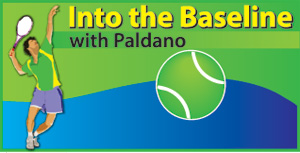Commercial mass or true elite competitors
View(s):Golden-30-months will decide
The ‘tough’ European Tennis clay season has begun. Events will be moving from Monte Carlo, Spain, Italy, Portugal and will peak in Paris at the Roland Garros Grand-Slam, the French Open. By the grace of the electronic media, we do not seem to miss all of the excitement. The skill level of the elite players always thrills spectators and their overall ability is what makes them exceptional performers. However, the big question is – how did they come to being?
 When taking up Tennis individually, almost everyone wants to be a ‘world-beater’ but over the years, a bigger number are happy playing at school, university and club level where the skills needed are well below the world elite standard. This popular choice is the result of young players not achieving elite standard in their early development years and not realizing that the ‘thirty golden months’ which put them in the map, begins at fifteen years of age. Many are ignorant of this fact. It is a short period in time and if lost, all other paths will be downhill routes.
When taking up Tennis individually, almost everyone wants to be a ‘world-beater’ but over the years, a bigger number are happy playing at school, university and club level where the skills needed are well below the world elite standard. This popular choice is the result of young players not achieving elite standard in their early development years and not realizing that the ‘thirty golden months’ which put them in the map, begins at fifteen years of age. Many are ignorant of this fact. It is a short period in time and if lost, all other paths will be downhill routes.
So in the early years a young player must be smart enough to escape the unproductive commercialism that has ‘plagued’ sport. If a nation stays on in the path of commercialism, sooner or later the sport will crash.
Making elite players is not the popular approach among the national organizations and academies for obvious reasons in recent times. Commercial interest has gripped 90 per cent of the Tennis playing countries but unfortunately the elite game acquisition, comes from a different road.
Jumping the ‘18’ barrier
It is interesting to find out how many players really survive on the road to acquiring elite skill levels of international Tennis. Competitive Tennis has only one goal and that is to succeed in the global Tennis arena. There is a barrier to clear to enter this arena. It comes around the age of 18 and by then a player should have developed the ‘magic portion’ to succeed, meaning, having the necessary skill levels to tackle global Tennis in personal stroke comfort, strong game, physical, tactics and the all important ‘mental maturity’.
All this leaves the question as to from where the young players of both genders with high levels of skill are still coming into the global tour every year? They are the players from the lot who took the ‘right road’ at fifteen years of age. That means, a player gets two to three years before the ‘barrier age of eighteen.’ At first they will only have a modest target of reaching around 500th world ranking. As you would see I have not mentioned junior and national rankings as targets and it is intentional. Too much emphasis on age group and national rankings are distractions to progress as success at these levels are mere ‘feathers in the cap’ that will wilt away in the professional open tour.
Sterling question
Although what I have stated may not be a fully fledged explanation of the need to enter the Open-tour, the gist of it should be clear to anyone who has interest in world ranking Tennis. This still leaves the sterling question unanswered. What is the secret route the successful players are taking to end up in the world ranking tour by eighteen? How are they bridging the ‘skill gap’ between local and international levels in just two to three years?
The answer is in the ‘decision’ to leave the training world and focus on the ‘game making’ competition world of Tennis. It’s this simple but too often missed. I strongly believe that this is the answer to the sterling question. The competition tour does not have the ‘cushion’ which accommodates personalised comforts of the training world. Training world however well designed, is a ‘closed and cushioned situation’. Competition world is an ‘open-situation’ where a player has to adapt to the real mega challenges taking all the discomforts, not once, but many times over. This is what gives ‘maturity’. If this is not understood, experienced and acquired, I do not see any other way to cross the magic-barrier at eighteen.
Secret of skill acquisition
For a long time, the continent which gave this maturity to players with its college and tournament Tennis circuit, is North America. Even today it has over 600 competitions annually. In the recent years, east and west European countries are almost matching the American scenario. If one takes the best players of Asia one would see a common factor in almost all of them regardless from which Asian country they came, they were ‘made in America’.
Golden-30-months
If organizations want to develop Tennis, the answer lies in making tournaments commercial and not focusing almost entirely on training. The number of open-events in a country will decide the fate of its players. Nothing matures a player faster than open-events and this is the ‘open secret’ of skill acquisition.
Primarily, a country must have a ‘guiding design’ for potential players for the golden-30-months, starting from fifteen. It is too short a time for players to research on their own. For the organizations dedicated to Tennis making this path should be the priority to produce players.
George Paldano, Former int. player; Accredited Coach of Germany; National, Davis-Cup, Federation Cup coach–. georgepaldano@yahoo.com


